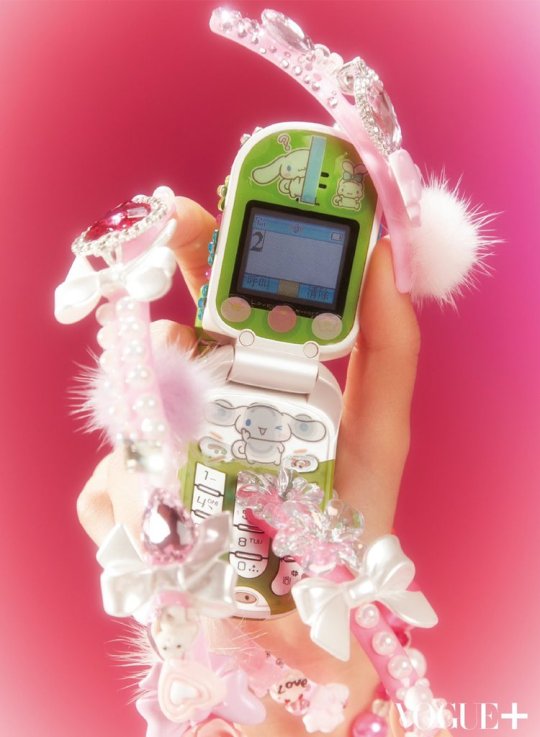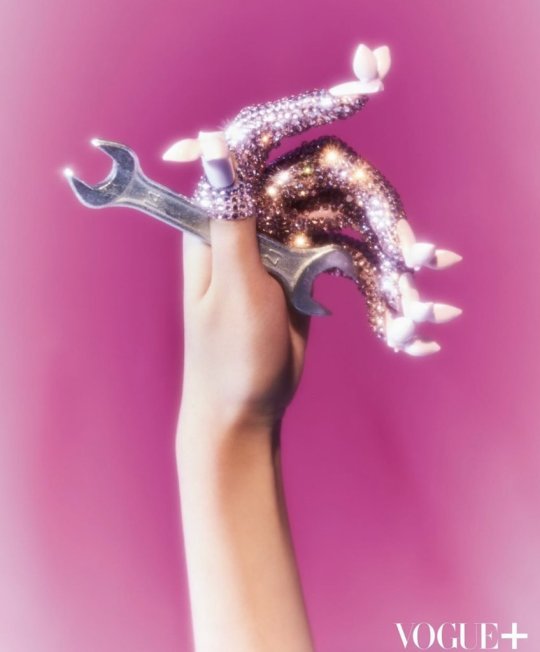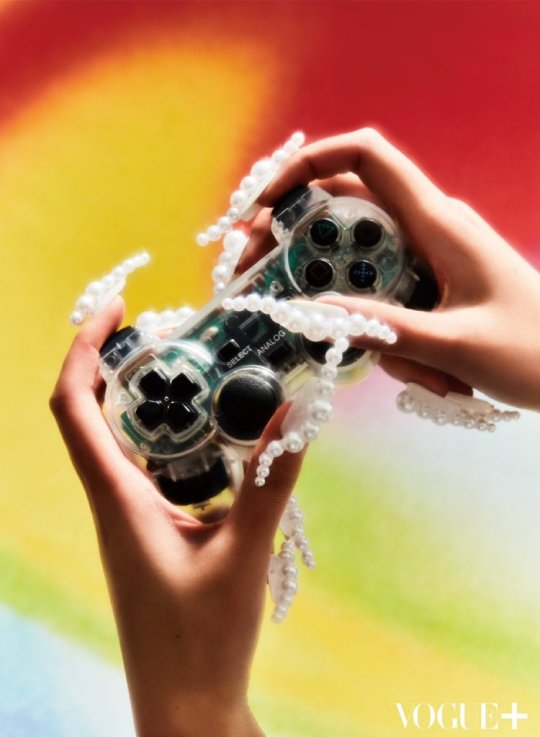manasvita // 18 // desi fashion student. she/her. interested in just about anything.
Don't wanna be here? Send us removal request.
Text


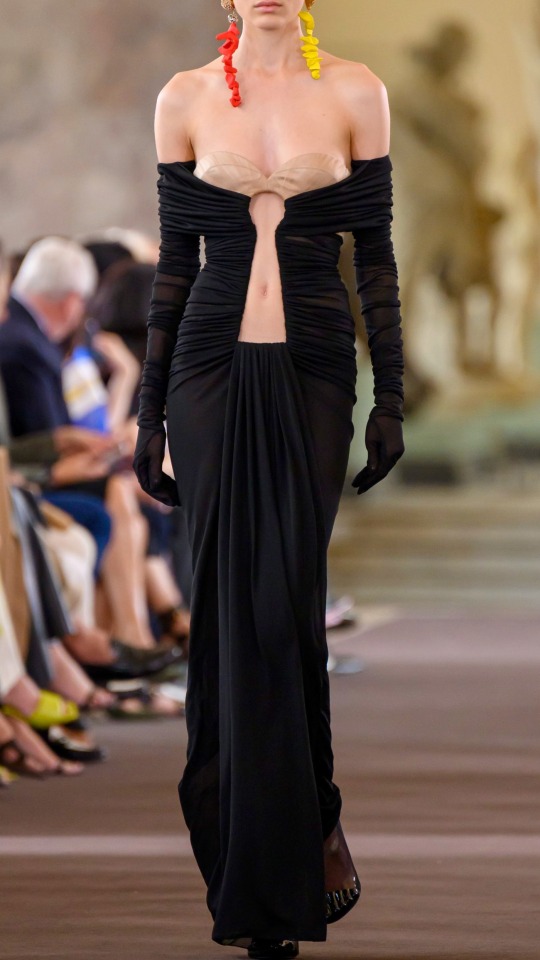
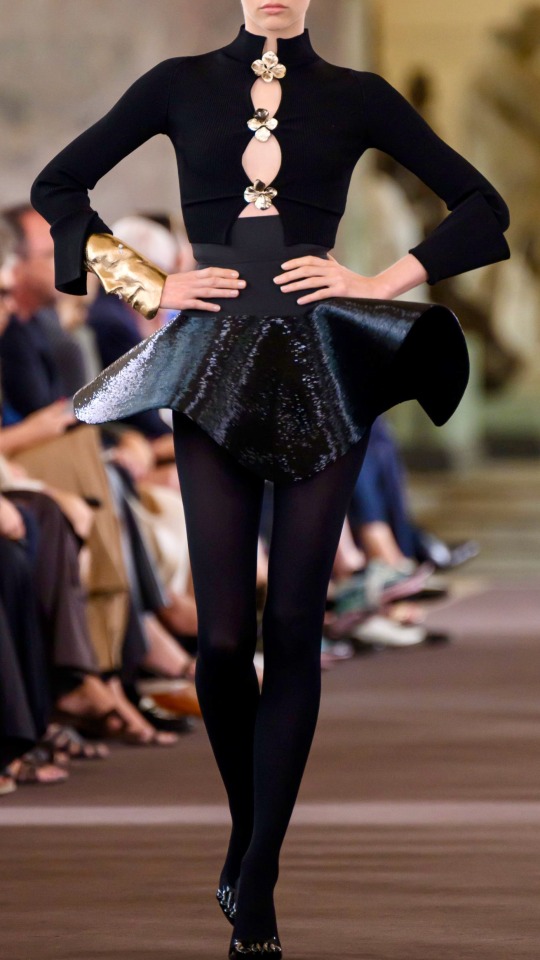





Schiaparelli | Fall/Winter 2023 Couture
466 notes
·
View notes
Text
Fast Fashion Fact!
Paper dresses were really popular in the 1960s (when I say paper, what I really mean is cellulose-weave). You can read this article to find out more!
I found this very interesting, especially because it really makes you think about the rampant consumerism in fashion (which was a lot more obvious in the form of a paper dress, but still holds good today).

(image source)
1 note
·
View note
Text
Rambling
I haven't found the time to watch the Met Gala yet! :(
Isn't that ironic? People think that's what we do at fashion college, but I was busy with papier-mâché instead.
Anyway, it might not be worth it, even if I find the time. The memes on Instagram have spoilt the entire event already.
I'm going to try and critically analyse The Devil Wears Prada and/or Cruella instead, but I'm also pretty sure that's already been done to death.
Honestly, I don't think anyone can ever claim to be truly original. Anything we create has to come from somewhere, even if it isn't apparent at first. As Dilbert once said, it depends on copying the masters badly; so badly that no one knows where you got your source material. Jokes aside, there's some truth to that statement.
Even the greatest masters draw inspiration from nature, philosophy, or their superiors. Issey Miyake's fold-laden collections are actually based on solid mathematical concepts, as seen in this brilliant video (full disclosure: Initially, I watched it for the math, not the fashion).

Issey Miyake's developable origami dress (Fall/Winter 2014-15).
But what does this mean for us, as designers-to-be? No one can be a bottomless pit of good ideas. Plagiarism is never okay, of course, but there's a fine line between inspiration and a dishonest rip-off. What's the difference? Is it intent?
And what about creativity? That's subjective, of course; for example, some see Rupi Kaur as a dangerous radical in the field of poetry, while others find her writing to be... milquetoast (to put it kindly). This reminds me of another old post, where I touched on the idea that people in various subcultures tend to homogeneity within those subcultures. This ties in with a few psychological theories about conformity (and acceptable versions of "non-conformity"). Funnily enough, this is called "the hipster effect" or the anti-conformist effect.
It's quite easy to understand why this happens, even for a pop psychology dilettante like myself. For evolutionary reasons, humans don't like to be seen as the odd one out (an easy target for ridicule or ostracism). But what happens when you don't want to be like the other girls? You try to be "different": and in most cases, that idea of "difference" looks like this- get a tattoo, change your hair colour, or get piercings. If you want to diverge from those norms, good luck keeping friends and family!
Of course, this isn't a personal judgment of anyone's tastes. As I've mentioned before, we all do this. All that differs is the way we choose to do it. All I'm saying is that there's a reason why you're more likely to find someone wearing this shirt than the one below.

image source: screenshotted by me.
Also, it's just a tiny bit difficult to be original in a field like fashion. In an industry that literally runs on a culture of rapidly-changing trends, it's risky to truly "reject the norms". Again, we face the debate about conformity vs measured deviance.
There's a lot to be said about this, psychologically (and even philosophically) speaking.
Wait. Did I just write an entire essay to avoid writing a different one?
8 notes
·
View notes
Text
Fad, Fashion, or Classic?
I weigh in on a few style phenomenons.

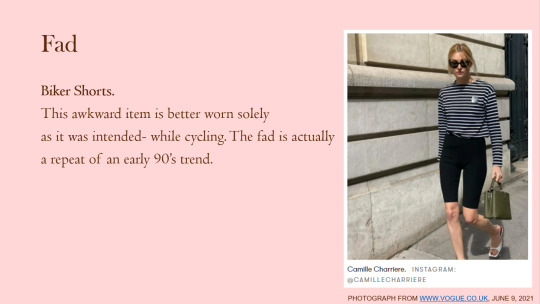
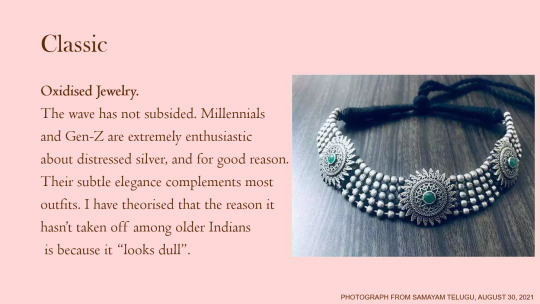

click to zoom.
1 note
·
View note
Text
Trend Forecasts: Predicting the Unpredictable
All fashion brands, from haute couture to retail, seem to stock similar styles at the same time (depending on which segment they belong to, of course). I've always wondered how that was possible.
Do people's tastes sync up, all of a sudden? Or is there something more to it?
WGSN (World Global Style Network) is an analytics and trend-forecasting service. Their Instagram page is regularly updated with predictions that date about 2-3 years into the future.

However, this forms only a small part of the story. For the low, low price of tens of thousands of dollars, you can access detailed trend analyses which cover everything from colour and texture to swimwear predictions.
There is no denying the importance of such predictions, as most brands plan their collections about two years in advance.
The predictability of a trend also depends on the type of product that's being analysed. For example, car bodies evolve over 5 years. Aircraft bodies may take decades (making any prediction a high-stakes game). For example, take the failure of the Airbus A380.
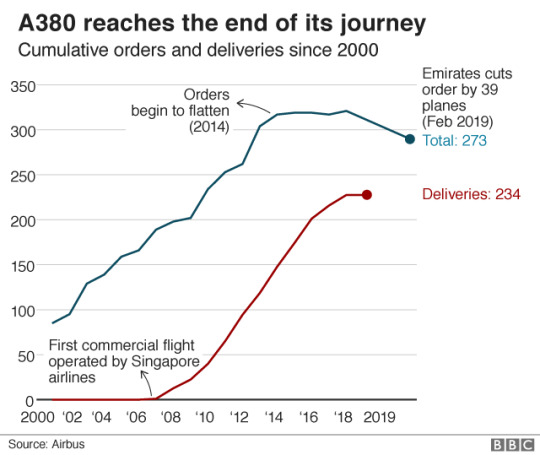
The problem was the sheer size of the plane. Although initial demand from the Emirates initiated the whole program in the first place, orders slowed to a drip after a brief surge.
Ironically, passengers loved the spacious flight and extra seating. Airline companies, however, were wary of the risks.
“The A380 is an aircraft that frightens airline CFOs; the risk of failing to sell so many seats is just too high.” ~Reuters, February 2019
Trend predictions are definitely a form of lifestyle forecasting. They depend on two important factors:
1) how are people going to spend their time?
2) how are people going to spend their money?
If you're able to answer these two questions, chances are that you'll be able to make a perfect collection. There's just one fly in the ointment: it's not very easy to answer them.
There are a few theories about why trend predictions work as well as they currently do, but I find one reason the most compelling. When brands have a ready-to-use template of what they can do to ensure success, why wouldn't they use it? I'm not just spitballing here; Marc Worth, one of the original founders of WGSN, called his former company "a monster". Of course, the problem here is that lots of brands are relying heavily on a single service, so their collections inevitably end up looking much more similar than they might like to believe.
There is a bit of science to trend forecasts, especially in the age of big data and AI, but we run into an old problem again. Using the language of science doesn't make a process scientific (a fact that is dear to my heart!), and trend predictions are certainly far from infallible. I'll be talking about this at length in a future post (yay!), but for now, I'll leave it at that.

An example of how trend analysis works. (source: Ananditha Bhuyan)
Our generation is definitely the one that prizes individualism the most. Ask any Gen Z kid how they want to appear, you'll probably hear the words "different" or "unique", nine times out of ten. This poses a very real risk to the entire field of trend analysis, because no one wants to be part of "the crowd" anymore. A recent article by Vogue explores the idea that no-name pieces are gaining traction these days, in opposition to logomania.

Unbranded jewellery on TheRealReal. source
Again, this brings to mind the joke that all hipsters end up looking the same. Modified slightly, this could apply to our generation, as well. In my opinion, subcultures are gaining more prominence in the mainstream, which leads to more people being aware of them, and thus being able to follow them. So we look fairly diverse as a whole, but once we're separated out into the subcultures that we are most drawn to, the similarities begin to show (think cottagecore, and so many other trends which have originated from this very website).
Personally, I hope the trend cycle slows down a little. No one needs two-week turnarounds or half-hearted fads.
Fast fashion fact:
The dressmakers who made Kate Middleton's wedding dress washed their hands every half hour and changed needles every three hours.

source
5 notes
·
View notes
Text
Fashion Interaction Activity
We were asked to collect some of our peers' most fashionable looks and describe why we thought so.



Click to zoom.
1 note
·
View note
Text
Lecture Series with Mr. Prasad Bidapa
This was our very first lecture, scheduled right after our classes. I wasn't sure what to expect, but I hoped it wouldn't add to the exhaustion that naturally accompanies a long day at NIFT.
Spoiler alert: I was pleasantly surprised.
Mr. Prasad Bidapa is a seasoned industry expert in the fields of design, textiles, styling, and model choreography. He is responsible for the success of Rajasthan Heritage Week, and initiated Colombo Fashion Week and India Men's Fashion week, among other events. He is extremely passionate about reviving India's handloom work, and giving local artisans the recognition they deserve. In spite of his success, he is a grounded individual, and remains connected to Bangalore, his hometown.
Much has been made of his impressive portfolio, but Mr. Bidapa's eloquence and tremendous knowledge aren't widely written about. Our interaction with him gave us quite a bit of food for thought.
The session started with Mr. Bidapa telling us that we had an unparalleled opportunity to succeed at NIFT. "You've got to be the best," he said, "because your generation has everything at the fingertips." Obviously referencing the internet, he said we'd be able to research everything from Uzbekistani ikat to clothing in the age of the Mahabharata with ease, and he encouraged us to do so.
This was followed by a freewheeling conversation about contemporary fashion, traditional handlooms, and everything in between. Personally, I was touched by Mr. Bidapa's recollections about his efforts to revive the handicraft industry, especially the one about the end of the show at Rajasthan Heritage Week: the models walked out one last time, flanked not only by the designers, but also by the artisans who actually made the clothes. He constantly reminded of our duty towards them, and the message struck home.
We we were also asked to look up and do our own research about the three great ikats of India, indigenous design processes from other countries, and a whole host of designers, including Hanut Singh, Vivienne Westwood, and many others. Needless to say, my Instagram feed is the better for the intervention!
The lecture concluded with an interactive session, and there were quite a few interesting questions, about topics like inclusivity in fashion, knock-offs, and the notorious Sabyasachi x H&M collection (the verdict would be best described as... unfavourable).
In conclusion, I'd like to add some of the new information that I've gathered because of the talk.
Hanut Singh is an Indian jewellery designer from the royal family of Kapurthala. In his own words, his aesthetic is "art deco meets today with a slight edge.”
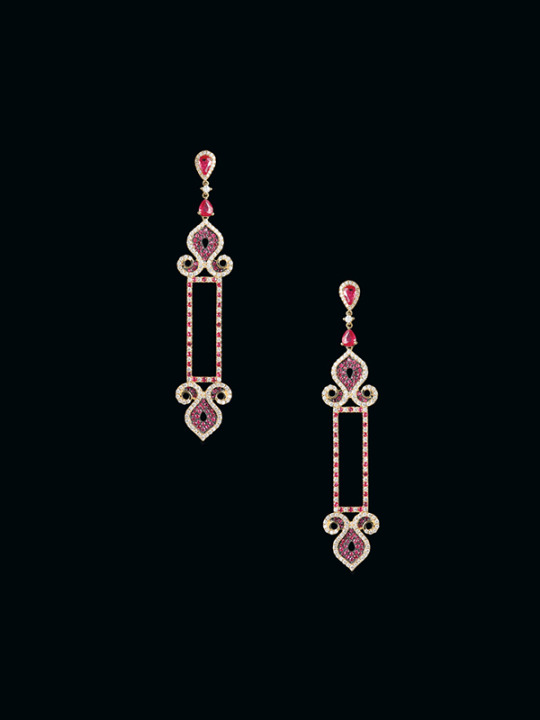
I especially loved these majestic earrings, and found them representative of his work, which celebrates 1920s decadence.
Vivienne Westwood was described by Mr. Bidapa as a trendsetter. One look at her website, and I'd have to agree. Her punk aesthetic truly calls out to my sensibilities as a metal fan!

These knuckle-duster rings are a great example of her punk aesthetic.
Abraham and Thakore was one of the brands which was strongly recommended to us. They focus on Indian textiles and processes, while adding a contemporary touch to their ensembles.

source
I find these outfits casual enough to wear on a day-to-day basis, without sacrificing the seriousness that a more structured ensemble would give.
Bandhej also focuses on Indian handicrafts, with an eco-friendly touch. Their looks are definitely traditional in flavour, and you could imagine the typical neighbourhood aunty wearing one of them. Their bandhini prints are top-sellers.
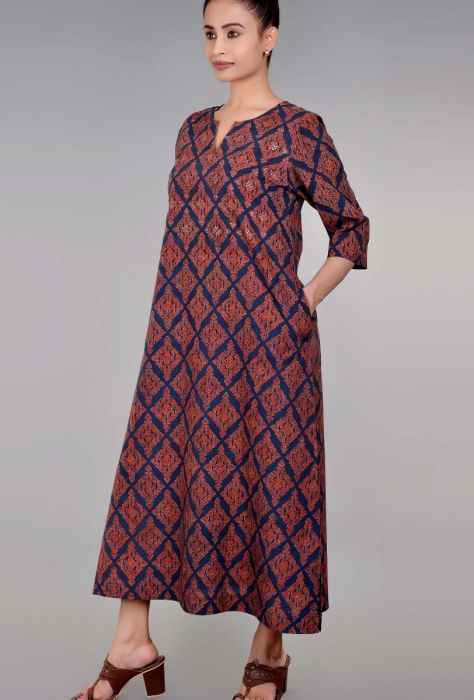
source
FDCI (Fashion Design Council of India) manages the business of fashion and charts its sustainable growth. However, it's not famous for either of these reasons; that honour goes to an event they organise, India Fashion Week.
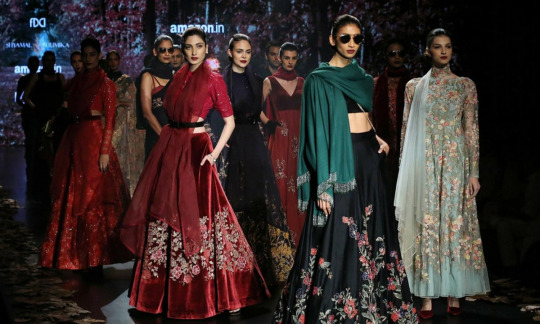
at India Fashion Week
The three great ikats
Warp ikat: The tense set of threads in a loom (the warp) is used to create colour patterns, while the weft is plain. This style of ikat is mostly practiced in Chirala, Andhra Pradesh and Nalgonda, Telangana.

source
Weft ikat: Self-explanatory. Weft ikat is more time-consuming than warp ikat, and is mostly practiced in Odisha.

source
Double ikat: Incorporates warp and weft techniques. It's the most intricate ikat style. Artisans from Telangana specialise in the aromatic Teliya Rumal, a variation of double ikat. It comes in red, black, and white.

source
In conclusion, I've learnt quite a bit about Indian handicrafts and textiles, and it was surprisingly interesting! I've realised that one of the reasons I wasn't very keen on learning about these topics before is simply a lack of awareness, and maybe an indication of how we undervalue our indigenous heritage, as a whole.
I'm truly grateful to Mr. Bidapa for making me realise this-- though I may not have known it at the time, the brief period of interaction we managed to have was invaluable to me.
#fashion#college#university#prasad bidapa#indian handicrafts#desi#academia#indigenous#ikat#craft#style
6 notes
·
View notes
Text
The Basic Basics
Whenever I tell people I'm a fashion student, I get the typical reactions any Telugu girl would expect: shock, mirth, or disappointment.
"What will you do with those clothes and sewing machines, amma?", laughed my mother. "That's not fashion, amma," I murmured, but that interaction got me thinking. If that's not fashion, then what is?
An entire article on Google Arts and Culture attempts to answer this very question. It begins, "Fashion is most often thought of as a global industry that is invested in anticipating what we wear and how we wish to appear to others. But fashion isn’t just a business. It’s also a cultural and social phenomenon, driven by the desire for the new." The addendum makes sense to me, and it fits in with what we were told in class: fashion isn't just about what you wear. It's about a projection of individual taste, just as much as what's viewed as socially acceptable.

image source: screenshotted by me.
What makes this shirt so off-putting to many, and why do others buy it willingly? The answer to that question might lie in the concept of style, or rather, personal style.
Style is defined as an individual's personal clothing preferences. Unsurprisingly, it is not susceptible to trends (defined as the vagaries of fashion. They are not static, but vary, depending on a range of factors). The existence of this term brings up a question: if style is a reflection of an individual's choices, why is some style "in bad taste", and why do stylists exist?
There are a few possible explanations for this, some of which were discussed in class.
Firstly, it's not always true that we are our own best judges. This means that our personal style might be too faddish, impersonal, or unsuited to our personality or body type. Stylists have specialised knowledge about fashion, placing them in a better position to advise and guide the average consumer. I would like to add another point here: in a time of shortening attention spans and blurring work/life boundaries, some may feel that choosing a wardrobe is too stressful or time-consuming: at least, a wardrobe that projects an image (or reinvents a previous image) that you want to project. And that's where stylists come in.
Fast fashion fact:
Lady Gaga's iconic meat dress was reincarnated by redying and chemically treating it, after its defrosting revealed an unpleasant odour.

image source here
14 notes
·
View notes
Text
An Introduction
Hello!
I'm an 18-year-old accessory design student, and this blog will be my virtual learning diary. I genuinely cannot believe how fortunate I am— for most people, studying fashion is just a dream— and here I am, just about to begin my first year! I plan to update it with my notes on fashion basics, styling tips, and some of my own research on interesting topics related to fashion, both Indian and otherwise.
The title of the blog is a reference to the distance between my college and my hometown: 355 miles between my future and my past.
Note: As my professors will be viewing this website, any inappropriate or indecent commenters will be blocked immediately. However, I encourage educational and constructive additions to my posts. Let's all learn together!
∼M
4 notes
·
View notes
